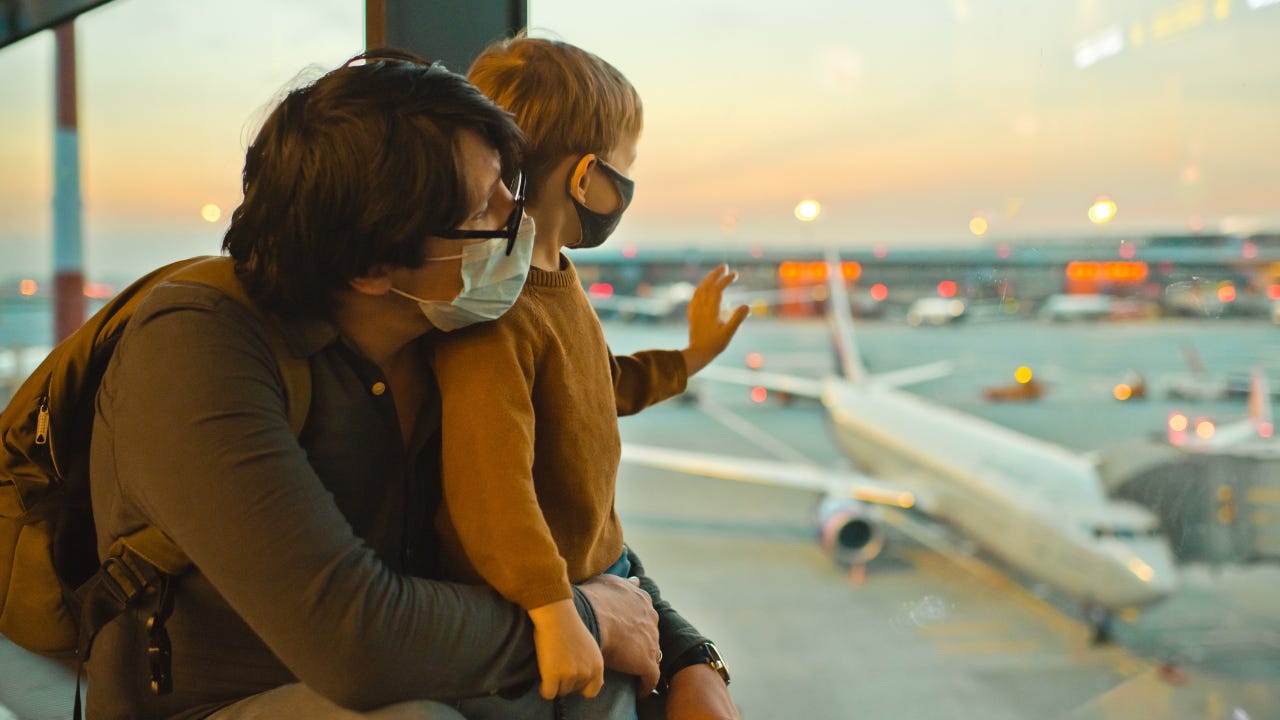Pent up travel demand has a ceiling

The Bankrate promise
At Bankrate we strive to help you make smarter financial decisions. While we adhere to strict , this post may contain references to products from our partners. Here's an explanation for . The content on this page is accurate as of the posting date; however, some of the offers mentioned may have expired. Terms apply to the offers listed on this page. Any opinions, analyses, reviews or recommendations expressed in this article are those of the author’s alone, and have not been reviewed, approved or otherwise endorsed by any card issuer.
While two-thirds of U.S. adults anticipate traveling in 2021, according to a recent Bankrate survey, just 24 percent say they will travel more than they normally would. At first, this really surprised me. After being cooped up for more than a year by the COVID-19 pandemic, I thought Americans would be ready to unleash a lot more pent-up travel demand.
But after digging deeper into the findings, I think it makes sense in context. There are still lingering fears about the virus, of course. And not everyone loved to travel even before COVID. There are other factors that could limit travel, such as your available funds and vacation time. In other words, if you missed three trips because of COVID, you’ll probably take one this summer, but you’re unlikely to truly catch up.
One widely watched measure of travel demand is the daily tally of airline passenger screenings published by the Transportation Security Administration. I find the July 1-7 time frame particularly interesting.
On July 1-2, for the first time since the pandemic was declared, the TSA screened more passengers than it did on the corresponding dates in 2019 (note that the data is adjusted to match the corresponding weekday, rather than the specific calendar date). That indicated a very strong start to the Independence Day holiday weekend, but then traffic tailed off. For the entire seven-day period, the TSA processed 19 percent fewer travelers than it did in 2019. The July 8-12 figures were down by a similar margin.
There’s no doubt that air travel is recovering—about three times more Americans flew in early July this year compared with last year—but it’s still well below pre-pandemic levels. Many are opting for road trips instead. Lower demand for business travel and international destinations are additional headwinds for the travel industry. Concerns about COVID variants are clouding the picture, too. And a sizable minority of Americans are reluctant to receive the COVID vaccine, while many residents of other countries don’t yet have access to a vaccine.
What this means for you
Since domestic leisure travel is leading the way right now, there are imbalances in supply and demand. Prices are sky high if you want to visit popular vacation spots such as Hawaii, Florida and California. If you’re able to wait until the fall, once kids are back in school, you should be able to find much better prices and wider availability. Also, in the spirit of zigging as others zag, Europe and other foreign destinations are on sale as they begin to reopen to American travelers. There are still plenty of restrictions, but if you’re comfortable venturing abroad, it could be a great way to save money and see the sights without the normal hordes of tourists.
Credit card bonuses abound
Wherever you’re going, or even if you’re sticking close to home, it’s a great time to sign up for a new credit card. After a slow 15 months, credit card marketers came out of hiding in June 2021 as virus fears ebbed and lenders switched from self-preservation mode to a growth mindset.
Right now, we’re seeing record-high welcome offers on popular travel credit cards such as The Platinum Card® from American Express, the Chase Sapphire Preferred® Card and the Capital One Venture Rewards Credit Card. Plenty of co-branded airline and hotel cards have joined the party with their own eye-popping offers, including Delta, Hilton, Marriott and others. Plus, Citi and Wells Fargo recently introduced attractive new cash back cards. And 0 percent interest promotions have roared back for balance transfers and new purchases.
It’s the best time in years—possibly even the best time ever—to sign up for a new credit card. Banks are aggressively competing for their share of the consumer spending rebound. You can play this to your advantage by asking yourself key questions such as:
- Am I able to pay my credit card bills in full? If yes, go for rewards. If no, consider a 0 percent balance transfer or introductory APR card.
- How do I spend most of my money? Since different cards prioritize different spending categories.
- What do I want to get out of my rewards? Travel and cash back are the primary choices.
- How much complexity am I willing to take on? Cash back cards tend to be more straightforward, whereas travel cards can offer more value if you’re willing to put in more work to research the best deals and are flexible enough to travel on those dates.
The bottom line
Whichever option you choose, make sure it’s the right fit for you since credit cards are personal, not one-size-fits-all. And consider that your lifestyle and spending habits may have changed considerably over the past 16 months, so the card that fits you best before the pandemic may no longer be your optimal choice.
Have a question about credit cards? Email me at ted.rossman@bankrate.com and I’d be happy to help.
Related Articles



